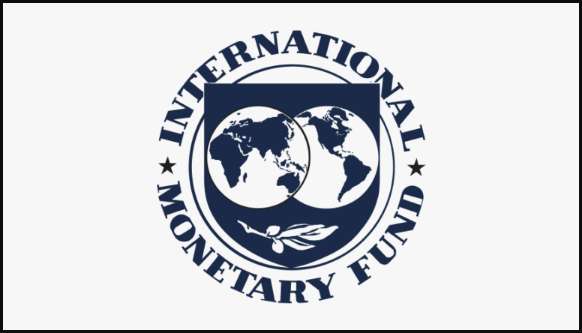IMF Loans, also referred to as International Monetary Fund Loans, have answered the prayers of numerous nations and continue to do so. What precisely makes the loan significant? Continue reading to find out more.

About the IMF
After World War II, the International Monetary Fund was established in 1944 as an inter-governmental organization tasked with promoting the viability of the international monetary system. It also promotes sustainable economic growth and reduces global distress.
ALSO READ: Travel loans – Where and how to get it in Nigeria
The IMF consists of 189 nations.
The IMF has experienced rapid development over the years, and it now offers loans to member nations to help them combat crises and payment issues.
The International Monetary Fund Loan (IMF Loan) has its detractors, its supporters, and even economists who have something to say about it.
What experts are saying about the IMF?
Supporters of the IMF state that they adore the IMF's mission because it offers assistance to member nations in times of crisis and helps to rehabilitate or reform economies that have fallen behind. However, critics have asserted that the IMF Loan is worthless because it supplants national autonomy and exacerbates economic issues. Economists assert that the loan creates a national moral hazard, which we will discuss in the disadvantages section below.
What loans do they give?
Unlike other development banks, the IMF does not provide loans for specific initiatives. Its loans are intended to assist countries in addressing their foreign exchange deficiency issues and stabilizing their economics.
IMF members receive two categories of loans: non-concessional loans and concessional loans.
Low-income countries are eligible for concessional loans with extremely low or, in some instances, negative interest rates. Non-subsidized loans carry market-based interest rates.
ALSO READ: How to Become Wealthy via Loans
Multiple mechanisms are utilized for IMF Loans. In practice, however, the Extended Fund Facility and Standby Arrangements are the most common. The Standby Arrangements only permit member nations to borrow funds for one or two years, with repayment terms ranging from three to five years. For the first option, the Extended Fund Facility, countries can borrow for three to four years and make repayments between five and ten years later.
What are the conditions for getting a loan?
Before the IMF will grant a loan, the requesting government must agree to modify its economic policies to address the issue that prompted it to seek financial assistance.
They also serve as guarantees that the country will repay its IMF loans. The terms differ depending on the economic policies of the lending nation. Common terms include:
1.Removal of price controls
2. Budget consistency with the fiscal framework
3. A minimal level of primary government balance
4. A ceiling on government borrowing
5. A minimum level of international reserves
6. Minimum domestic revenue collection
7. A minimum level of social assistance spending such as subsidies
8. Enhance financial sector operations
9. Establish social protection systems
10. Strengthen public financial management
How do countries get loans from IMF Loans?
Upon request, countries that are IMF members can access IMF loans for their balance of payment requirements. On request, the IMF will debate the country's financial situation and needs with its government.
Prior to the IMF's approval of the lending, the country requesting the loan and the IMF must concur on economic policies. Depending on the IMF's policy conditionality, the country must satisfy certain prerequisites and submit a letter of intent and a comprehensive Memorandum of Understanding to The Fund's Executive Board.
Once an agreement has been achieved on the package's policies and financing, the Fund's Executive Board provides the country with access to IMF resources.
Merits of the IMF Loans
1. Fills Deficit Gaps: In order to close the gap, a loan from the IMF is often advantageous for countries with a balance of payments deficit.
2. Offers Loans to its Member Nations: Perhaps the most well-liked feature of the loan is its ability to bail out member nations in times of crisis. The IMF may decide to affix conditions, such as specific economic policies, to its loans that governments are obligated to adhere to.
3. Technical Assistance and Support: Loan providers counsel and advise nations attempting a new economic policy.
4. Global Financial Stability and International Monetary Co-Operation:The loans contribute to the financial stability of the global market.
5. Economic Growth: It not only rescues national economies and fills deficit gaps, but also contributes to economic development.
What are the shortcomings of IMF Loans?
Unquestionably, many have benefited from IMF loans, but the institution is still subject to criticism because of this.
1.Creates Moral Hazard: Numerous nations commit the error of creating unsustainable budgets because they believe they can obtain an IMF loan. According to skeptics, it is identical to the moral hazard produced by government bailouts of large banks.
2. Barely any Intervention or Too Much of it: Most people detest the IMF because it sometimes spends too much or too little time. Critics accuse the IMF of only assisting countries with liberal markets. Free-market advocates accuse the IMF of being excessively interventionist.
3. Rich Countries Control The Organization:Rich countries determine the IMF. They determine which countries are eligible for loans and the associated terms. Developing nations are mere spectators in the scheme.
4. Unfavorable IMF Conditionalities: Countries can only obtain IMF financing if they agree to comply with IMF terms. These conditions, such as the elimination of subsidies, increase poverty in borrowing countries and are detrimental to the masses.
5. Unlevel Playing Field: The removal of trade barriers and quotas, which makes room for foreign products and services, is a condition of IMF loans. In a free market economy, local enterprises cannot compete with international corporations.
Conclusion
The IMF, which is tasked with promoting sustainable growth and reducing global poverty, has recorded both successes and disasters in its efforts. The IMF loan has been successful in some countries (the 1997-1998 Asian financial crisis) and unsuccessful in others (primarily low-income countries).
ALSO READ: Step-By-Step Procedure on Car Loan Application in Nigeria
Critics highlight its unfavorable stipulations, such as fiscal austerity, privatization, trade liberalization, open capital markets, and high interest rates, which have largely failed in developing nations.
In recent years, the IMF has reformed their loan conditions and developed a number of loan programs aimed at assisting low-income countries.




Destiny Isaac 4 w
Nice